Sustainability is no longer a buzzword, it’s a business imperative. When it comes to exhibitions, going green is not just about environmental responsibility; it’s about saving costs, meeting client expectations, standing out from the crowd, and building a future-ready brand. More than ever, companies are being held accountable for their environmental impact. From reducing waste to lowering emissions, the choices you make when designing and building your exhibition stand reveal a great deal about who you are.
Park Display has been at the forefront of this transition, assisting clients in creating beautiful, functional exhibition stands that do not compromise sustainability. In this article, we will guide you through why sustainable stands are important, how to construct them, and the real-world impact they can have.
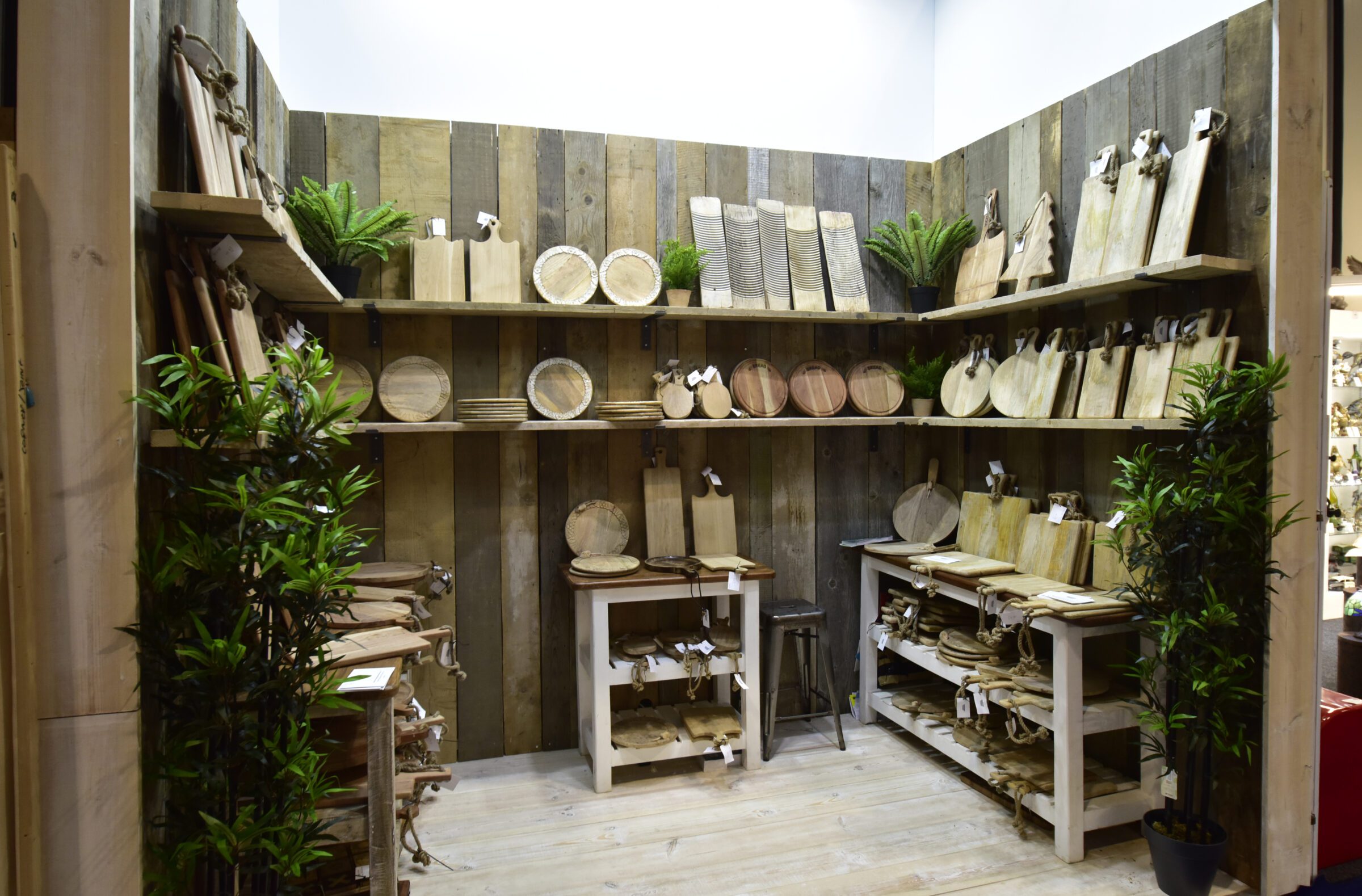
Why Sustainability Matters
Aligning Values with Action
At the heart of sustainable exhibition design lies a simple premise: do less harm and more good. This isn’t merely altruism. With growing pressure from consumers, regulators, and investors, sustainability has become a crucial aspect of doing business. A sustainable exhibition stand isn’t just an environmental choice—it’s a strategic one. It conveys a clear message that your brand is forward-thinking, responsible, and aligned with the values of today’s marketplace.
Visitors to your stand—whether clients, partners, or press—are paying more attention to how your message is presented. An exhibition booth made from repurposed materials, illuminated with energy-efficient LEDs, and backed by a carbon-offset transport plan immediately sets your business apart as one that is committed to making a difference. In an increasingly competitive environment, these small differences matter.
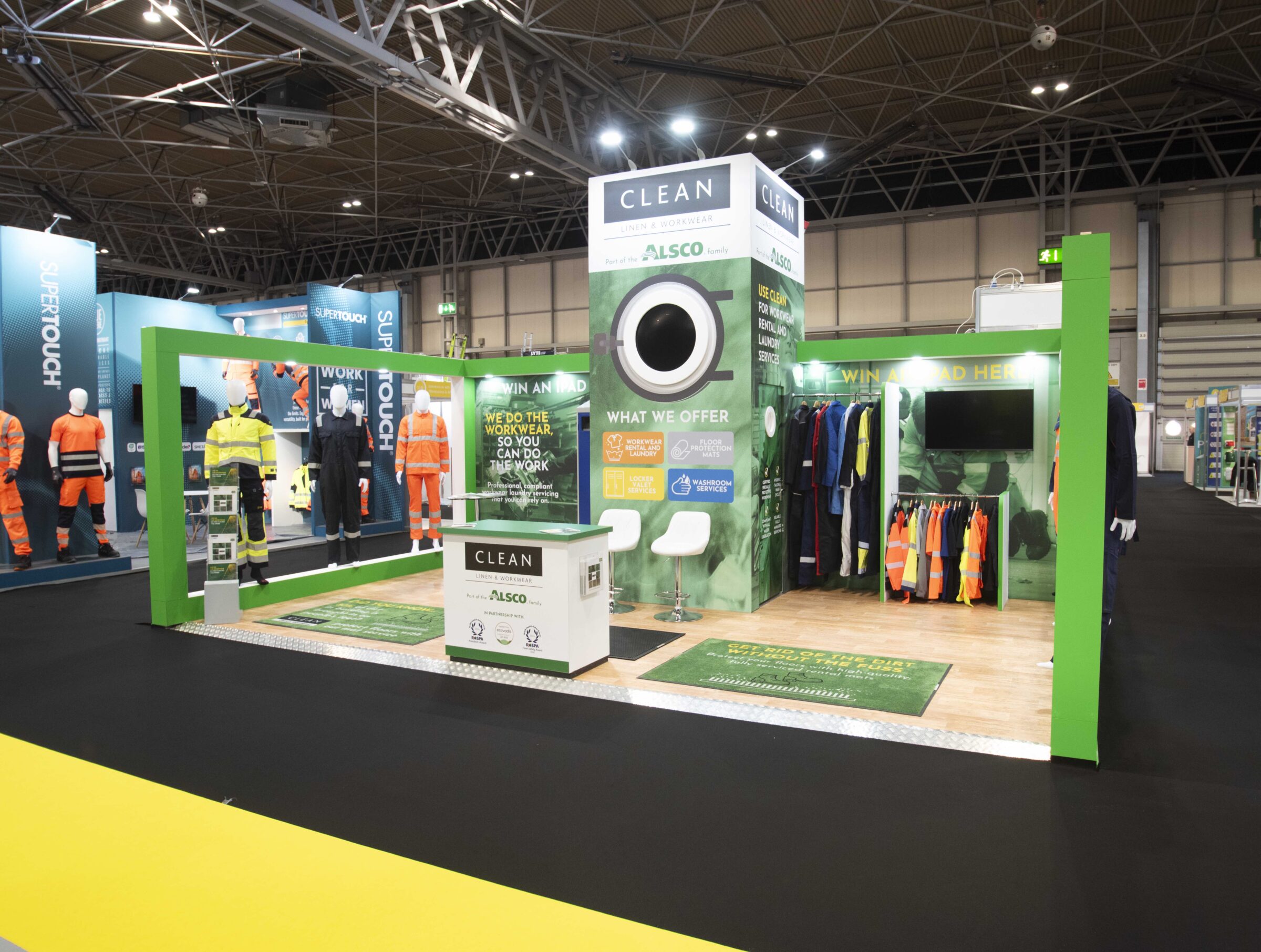
Environmental Impact: The Hard Stats
Let’s examine the figures. Traditional, or legacy, exhibition stands typically generate considerable environmental waste. One study by the Green Trade Show Alliance found that a three-day event can produce over 170 kilograms of waste per exhibitor. Much of this waste ends up in landfill, with structures being scrapped and promotional materials discarded in large quantities.
Switching to a sustainable build can drastically reduce this figure. Modular stands, for instance, allow up to 70% of components to be reused across multiple events. Similarly, the use of LED lighting cuts energy consumption by up to 80% compared to halogen lighting, while also significantly extending its lifespan—lasting up to 25 times longer. These aren’t marginal gains; they are transformative steps towards a cleaner, more responsible events industry.
How to Make Your Stand Sustainable
Setting Meaningful Goals
The journey towards sustainability begins with intention. Before you start designing your stand, take the time to establish clear sustainability objectives. Are you aiming to reduce transport emissions? Eliminate plastic? Use only certified sustainable timber? These decisions, when made early on, help shape a design that reflects your environmental priorities and facilitates a more coherent execution.
Park Display collaborates with clients to integrate these objectives into every stage of the process. This may involve sourcing local materials, selecting suppliers with robust environmental credentials, or re-evaluating logistics to minimise emissions.
Materials That Matter
The materials used in a stand often convey the clearest narrative about a brand’s sustainability efforts. There has been a significant shift away from resource-intensive options such as PVC, MDF with toxic adhesives, and virgin plastics. Instead, we observe a rise in the use of FSC-certified wood, recycled aluminium, bamboo, and eco-fabrics.
For instance, wood, when sourced responsibly, can be both durable and low impact. Some suppliers even provide carbon-offset programmes where each purchase contributes to reforestation efforts. Compared to plastic, wood not only presents a warmer, more natural aesthetic but also a significantly lower carbon footprint throughout its lifecycle.
Graphics and signage have evolved too. Rather than relying on vinyl prints that are discarded after a single use, many exhibitors are switching to tension fabric systems printed with non-toxic, water-based inks. These can be reused event after event, saving both money and landfill space.

Some of the most popular sustainable materials include:
- FSC-certified wood
- Recycled aluminium
- Bamboo and other renewable timbers
- Eco-friendly tension fabrics with water-based inks
- Non-PVC display panels
Designing for Reuse and Flexibility
Modular design is not merely a design choice; it is a philosophy. By creating bespoke stands that can be reconfigured for various event spaces, clients dramatically reduce their material footprint. A single modular structure, ingeniously designed, can serve throughout an entire event calendar with minimal modification. This not only saves waste but also reduces labour, transport, and construction costs.
At Park Display, we often collaborate with brands to develop systems that easily adapt to changing layouts and evolving brand requirements. Over the course of a year, some clients save nearly 40% in production costs by reusing modular components across multiple exhibitions.
Benefits of modular exhibition design:
- Reduced material waste across multiple shows
- Lower long-term costs
- Easier transport and assembly
- Adaptability to different booth sizes and layouts
Energy Efficiency in Practice
Lighting is one of the most visible—and impactful—areas for improvement. Switching from halogen to LED lighting is one of the easiest ways to make a stand more energy-efficient. LEDs not only consume a fraction of the power, but they also emit less heat, reducing the cooling requirements in large event spaces.
Many exhibitors are exploring solar options or partnering with green-certified power providers where available, beyond just lighting. Devices and digital displays should be turned off when not in use—simple steps that, when scaled across a large event, can have a significant impact.
Minimising Waste from Day One
Designing for sustainability involves considering the entire lifecycle of your stand—before, during, and after the event. This includes minimising printed brochures in favour of QR codes, tablets, or downloadable digital packs. For giveaways, select items with genuine value and longevity—such as bamboo pens, cloth totes, or reusable water bottles. Steer clear of landfill-bound trinkets that merely undermine your environmental message.
After the event, having a clear plan for the storage, reuse, recycling, or donation of materials ensures that your investment in sustainability does not cease when the show concludes.
Smart waste-reduction strategies:
- Replace printed brochures with QR codes or tablets
- Opt for reusable giveaways (e.g. tote bags, bamboo pens)
- Implement a recycling plan post-event
- Store or donate materials after use
Engaging with Meaning
Perhaps the most powerful impact a sustainable stand can have is emotional. By using your space to narrate the story of your environmental efforts, you invite attendees to become part of something larger. Consider incorporating interactive elements, touchscreens, and visual storytelling to convey the ‘why’ behind your design choices.
When people see that your sustainability efforts are authentic and considered, they don’t just remember your brand—they respect it.
Stands that generate business
Our extensive experience in designing and building exhibition stands means that we really do know what works. You can be sure that the stand we provide for you will be both attractive and effective.
Case Studies: Real Clients, Real Impact
Bahía del Duque – World Travel Market
This luxury resort in Tenerife approached us with a clear brief: create a beautiful, premium stand experience with minimal environmental impact. We responded with a structure built from FSC-certified timber, soft LED lighting, and reusable, fabric-based graphics. The aesthetic aligned perfectly with their brand values, while 60% of the materials were repurposed for a second show. The result? A stunning presence at the World Travel Market—and a significantly lower carbon footprint.

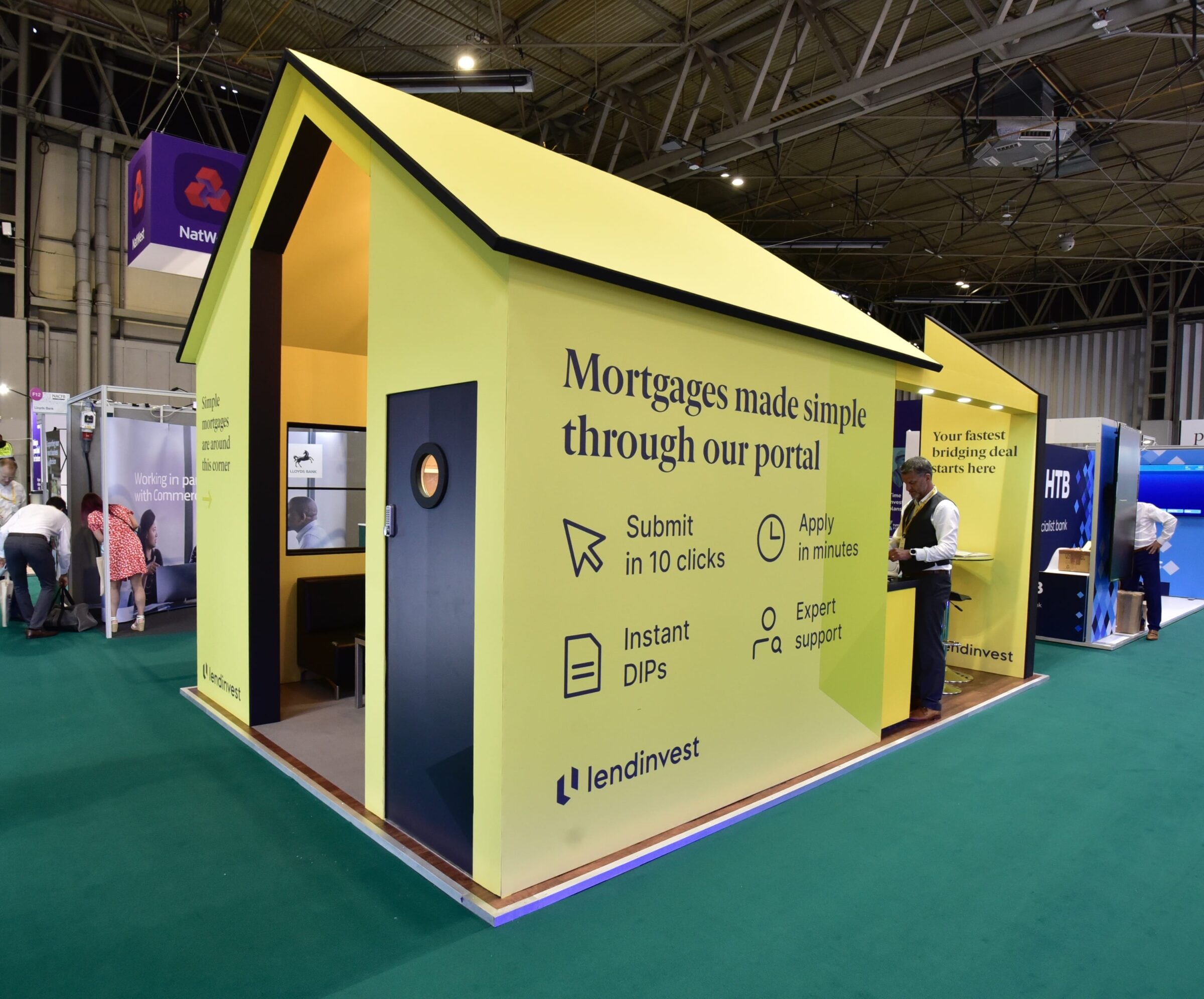
LendInvest – NACFB Commercial Finance Expo
For LendInvest, the brief was focused on practicality and purpose: reduce the environmental impact of exhibiting while maintaining a sleek, professional design. We used modular components, recyclable materials, and digital content in place of printed brochures. Emissions from transport were offset using certified carbon credits. Over the course of three events, the same core stand components were reused, dramatically reducing waste and cost.
Challenges & How to Overcome Them
Of course, sustainability isn’t without its complexities. Some areas, like transportation, remain difficult to fully decarbonise—especially when attending international shows. But this doesn’t mean inaction. Carbon offsetting, lighter materials, and local build teams all contribute to reducing transport-related impact.
Others worry about cost, fearing sustainable stands will break the budget. In truth, while upfront costs can be marginally higher, the long-term savings from reusable systems, energy efficiency, and reduced disposal fees often make the total cost of ownership significantly lower.
The key is planning. By starting early and working with experienced partners, many of these challenges can be turned into opportunities.

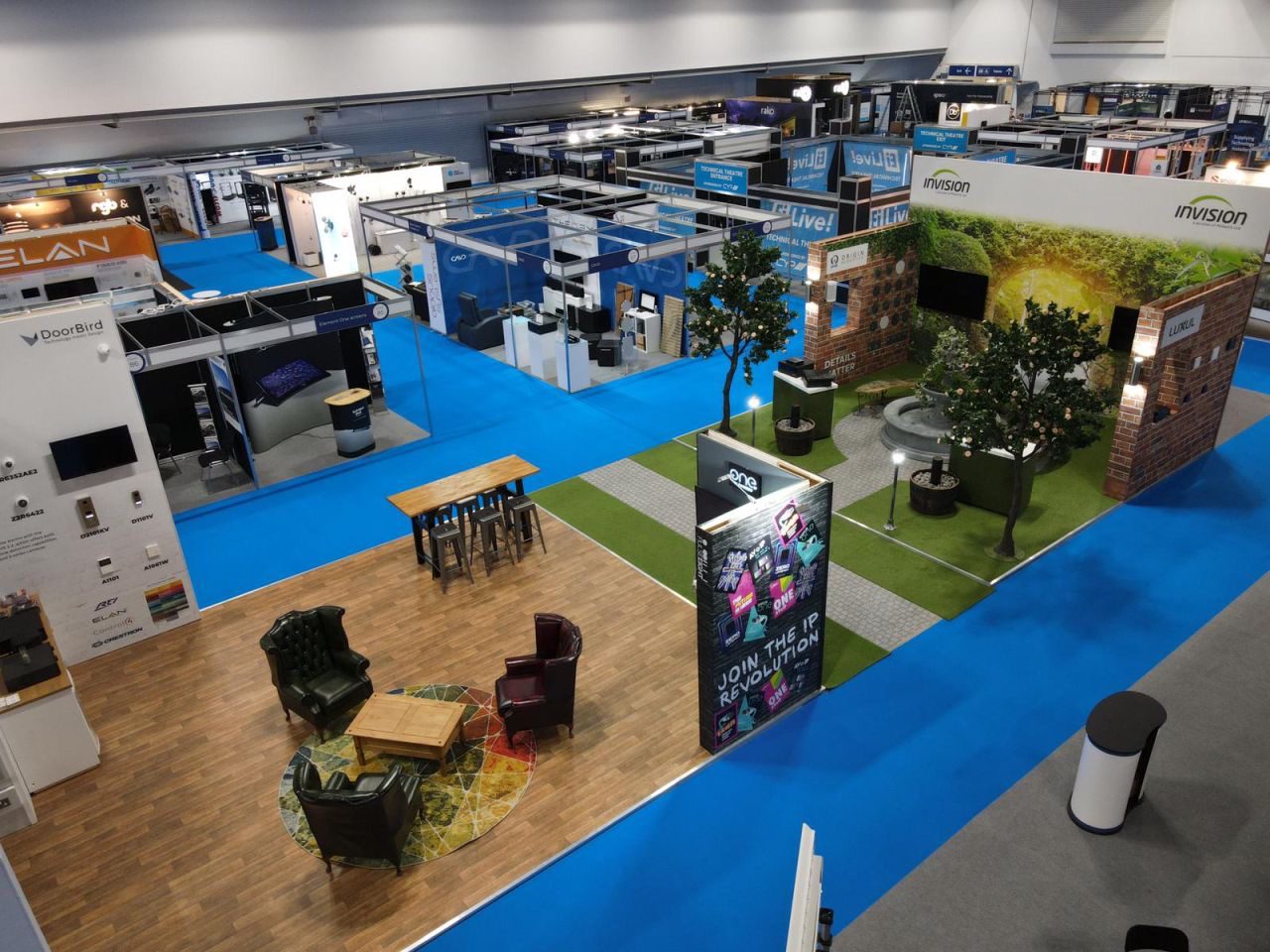
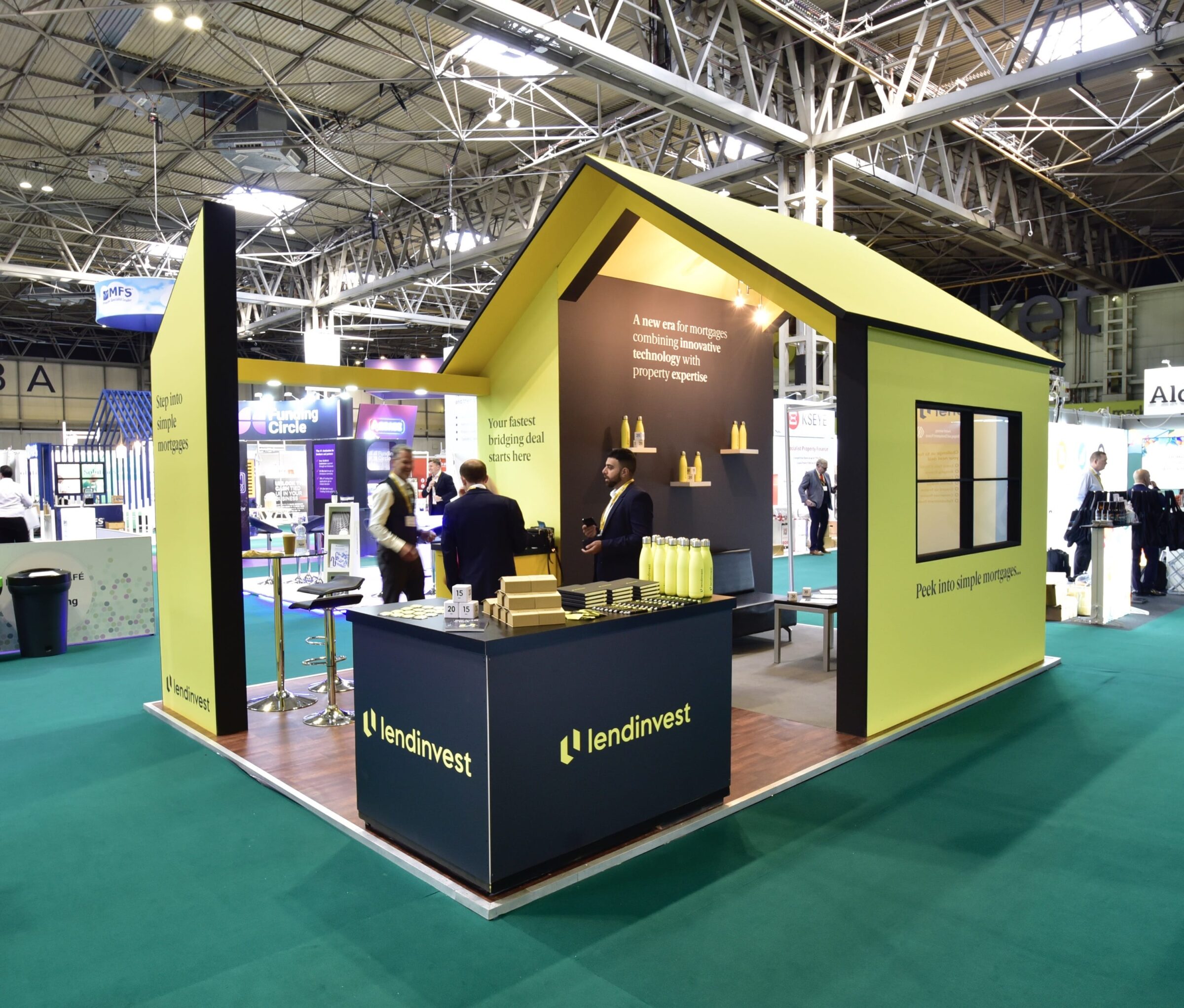
So, where do I start to make my exhibition stand more sustainable?
Set clear goals:
Having defined sustainability objectives for your exhibition stand such as energy efficiency, waste reduction, eco-friendly materials, and transportation choices can help you make better, more sustainable decisions on a day-to-day basis. Take steps to incorporate sustainability objectives into your business plan.
Choose sustainable materials:
A simple change to make is to opt for eco-friendly, recyclable, or reusable materials whenever possible. Sustainable options include recycled cardboard, bamboo, FSC-certified wood, and low-impact paints help get the message across of your commitment to sustainability. Most importantly, avoid single-use plastics. If possible, source materials locally to reduce transportation emissions. Be sustainable in terms of graphics and signage too, by using eco-friendly inks and printing methods for graphics and signage. Consider fabric banners instead of vinyl, as they are more sustainable.
Choose a modular design:
By designing your stand to be modular and adaptable to different booth sizes and configurations you are reducing the need for new materials for each exhibition. Investing in reusable stand structures that can be used for multiple exhibitions, reduces the need for costly construction and disposal.
Be energy efficient:
Use energy-efficient lighting, such as LED bulbs, and consider solar or renewable energy sources if feasible. Ensure all electronics and lighting are turned off when not in use.
Reduce waste:
Designing the stand to produce less disposable material will minimise waste. Digital displays rather than printed materials and providing digital brochures or QR codes for information can make a drastic impact in reducing waste and cost. Implement a clear recycling and waste management plan for the exhibition with bins labelled for different types of waste, and ensure proper disposal or recycling of materials. After the exhibition, responsibly dispose of or store your materials for future use. Recycle or donate materials if possible.
Engage visitors:
A sustainable exhibition stand will set you apart from your competition and the more creative you are, to this end, the more likely you’ll attract visitors. Use interactive displays and engagement activities to educate attendees about sustainability and inspire them to make eco-conscious choices. Promote your sustainability efforts to attendees through signage and engagement. Explain how your stand is eco-friendly and why it matters. If you provide giveaways or promotional items, choose reusable or sustainable items such as bamboo pens, cloth tote bags, or stainless-steel water bottles.
Measure and report:
Be sure to keep track of the environmental impact of your exhibition stand, such as energy consumption, waste generation, and transportation emissions. Report on your sustainability achievements. Use feedback and lessons learned from each exhibition to improve your sustainable practices for future events.
Let’s Build a Stand That Lasts
At Park Display, we believe that a truly great exhibition stand does more than attract attention—it represents your values. Sustainability is a long-term investment in your brand’s credibility, your operational efficiency, and your legacy. Whether you’re just starting out on your sustainability journey or looking to elevate your current approach, we’re here to help.
Get in touch today for a free consultation, and let’s talk about creating a stand that’s as sustainable as it is unforgettable.
Stands that generate business
Our extensive experience in designing and building exhibition stands means that we really do know what works. You can be sure that the stand we provide for you will be both attractive and effective.


